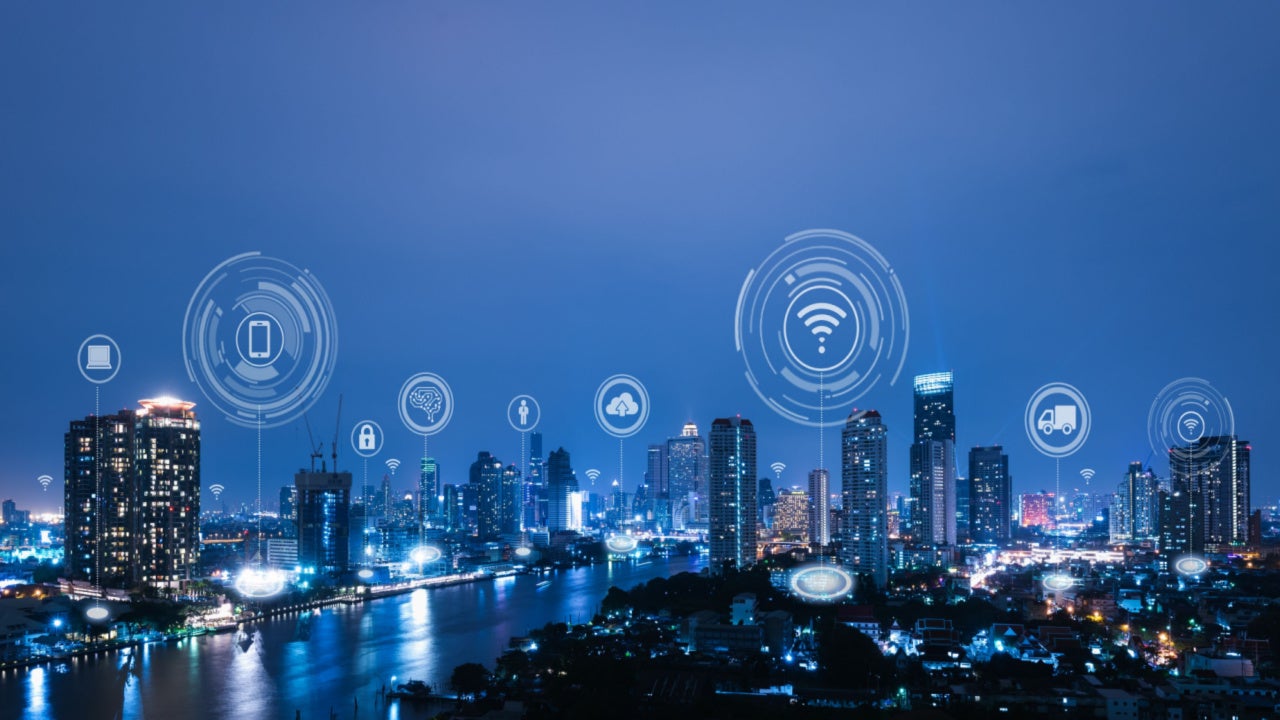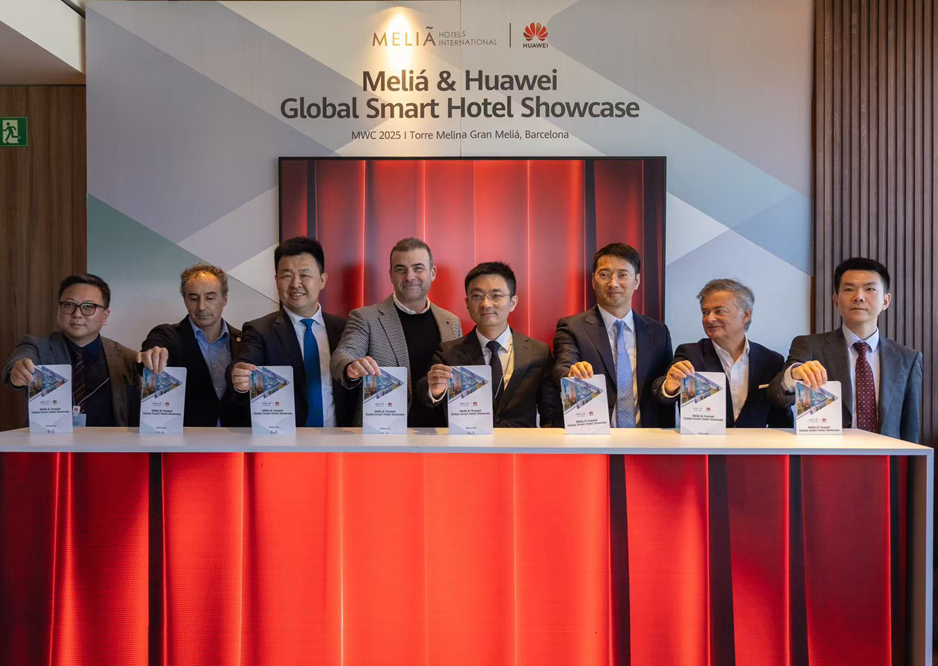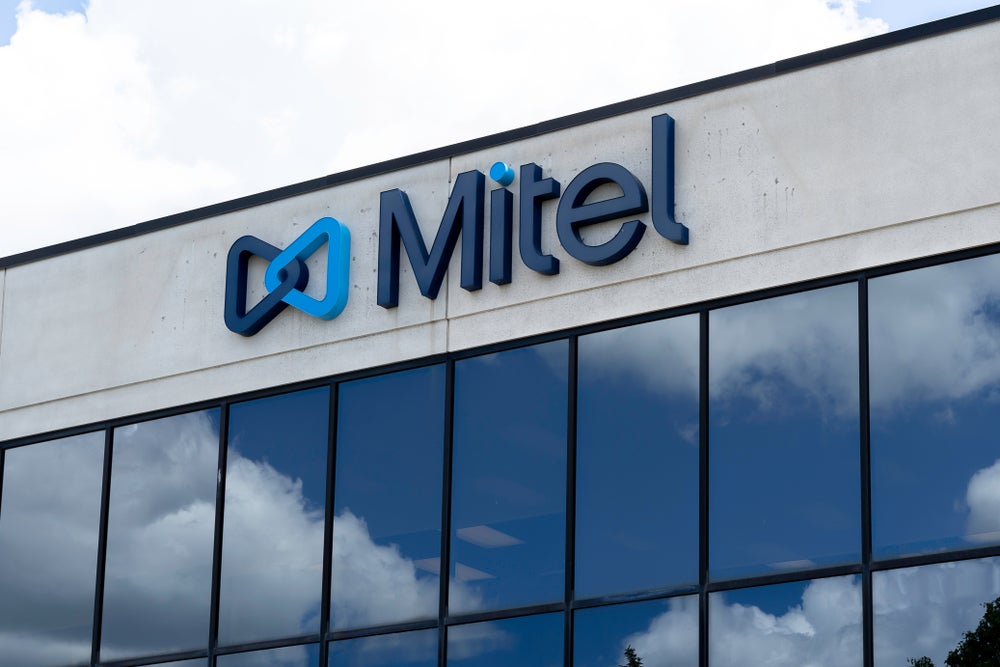IoT leads as Verdict lists the top five terms tweeted on future cities in Q2 2022, based on data from GlobalData’s Construction Influencer Platform.
The top trends are the most mentioned terms or concepts among Twitter discussions of more than 187 future cities experts tracked by GlobalData’s Construction Influencer platform during Q2 2022.
1. IoT – 1,656 mentions
Internet of things (IoT) helping local governments achieve sustainability goals, and urban transport systems becoming smarter and effective with the implementation of IoT technologies, were some of the popularly discussed topics in Q2.
Mike de Waal, president and CEO of Global IQX, an artificial intelligence (AI)-driven insurance technology platform, tweeted on IoT-based utilities, smart meters, and thermostats making infrastructure management more efficient, thereby helping improve urban residential life. Connected buildings and IoT solutions is expected to play a key role in decreasing energy consumption, while increasing the quality of life, the article detailed. As a result, research highlights that almost 85% of the organisations in the US are investing in smart building technology to reduce energy costs.
IoT devices can be leveraged by any industry, namely smart thermostats and lighting equipment, for instance, to reduce power consumption through real-time monitoring, thereby making buildings more sustainable and energy efficient. For example, facility managers can alter the schedule of energy consumption by some of the electronics in a building to reduce the demand during peak hours, the article noted.
The term also trended in an article shared by Kirk Borne, a data scientist, on IoT in intelligent transportation systems anchoring smart traffic for smart cities. Urban transport systems can become smarter with IoT with respect to efficiency, safety, and energy conservation, the article detailed. Many countries such as the UK, the US, and Singapore are already exploring the disruptive potential of the implementation of IoT in intelligent transportation systems (IoT-ITS). Some use cases include the easing of traffic congestion that contribute to higher pollution levels and the use of fuels for transportation vehicles.

US Tariffs are shifting - will you react or anticipate?
Don’t let policy changes catch you off guard. Stay proactive with real-time data and expert analysis.
By GlobalDataSensors, in particular, have become more pervasive than ever for road transport, the article highlighted. For example, the use of beacons (bluetooth low energy) and LoRaWan technology in IoT-ITS will drive new opportunities in V2X (Vehicle to Everything). Additionally, IoT solutions are expected to open new customer experiences in the IoT-ITS, given the rise in the demand for more and more connected and autonomous vehicles.
2. AI – 1,608 mentions
The need for city administrators and local employers to close the AI-related skills gaps in the US, and The Netherlands leveraging AI to create a green village, were some of the popular discussions during the quarter.
Andreas Staub, head of corporate development and digital transformation at the Raiffeisen Switzerland, a banking group, shared an article on how cities need to prepare for the coming of AI. For instance, a number of cities are planning towards becoming smarter by implementing AI-driven services and processes, such as intelligent traffic control systems to improve urban life, the article detailed. However, this will not amount to success alone, as city administrators and local employers will have to plan to fill these skills gaps with new jobs and opportunities, along with helping communities adapt to the transition.
Many cities such as New York, Pittsburgh, Pennsylvania, and Rochester, which were once dependent on manufacturing industries, for instance, have moved to knowledge-based economies. As a result, these economies can be supported if the cities, education experts, and organisations evaluate and prepare for AI-related skills gaps appropriately, the article noted. Studies assessing the widespread shift of AI likely to trigger urban shifts in cities found between 33% to 44% of working people to be considered at high risk across 24 major US cities. These included retail salespersons, cashiers, office workers, and others. This implied millions of people likely to transition to new jobs and roles in the next five years, the article highlighted.
In another tweet, Ronald Van Loon, CEO of the Intelligent World, an influencer network connecting technology experts and executives, shared a video on The Netherlands creating a green village managed by AI. ReGen Villages, a real estate firm, will grow organic vegetables on vertical farms, recycle waste into animal food and fertiliser, generate its own biogas and solar power, and use AI to manage its infrastructure, the video illustrated. The company is also aiming at designing villages for every climate, especially for countries like India and sub-Saharan Africa, where the population is growing rapidly.
3. Self-Driving Car – 1,121 mentions
Volvo having innovated with self-driving garbage trucks, and Phantom Auto’s remote-operated vehicle, were some of the popular discussions in the second quarter.
Glen Gilmore, founder of the Gilmore Business Network, a digital marketing consultancy, shared a video on the luxury vehicles company Volvo having developed driverless garbage trucks that are designed to be operated by one garbage collector. The truck matches the collector’s pace as he walks behind it, collecting the bins after setting the truck to self-drive, the video highlighted. The truck is driven through the neighbourhood to identify the route with sensors that track things around it. It can also back up around parked cars, and automatically stops in front of moving objects, the video demonstrated. These smart trucks are currently being tested in Sweden.
Discussions around the term also involved Dr Marcell Vollmer’s video on remote-controlled vehicles by Phantom Auto, a transport and logistics company working on software solutions that can help operate, assist, and supervise vehicles remotely. The video describes how a remote operator controls the car in a test conducted on the streets of Mountain View, California. Controlled in real-time, the appeal of a remote-operated vehicle is similar to an experience in an autonomous vehicle (AV), except that it can steer in different directions if required such as a construction site or if blocked by somebody in the entry of a driveway, the video showed. Phantom is currently working on helping confused AVs.
4. Electric Vehicle (EV) – 283 mentions
City of New Council signing up GridBeyond to support its EV charging hyperhub, and China’s least expensive EVs, were some of the trending discussions in Q2.
Helen Olsen Bedford, a publisher and consultant, shared an article on the City of York Council signing up GridBeyond, a technology provider, to connect its AI-powered GridBeyond Point platform to the on-site 350KW battery, thereby enabling it to take part in the National Grid’s balancing services. This will directly lead to a reduction in carbon emissions and the City of York will be given a monthly revenue from the National Grid for participating in the frequency balancing, the article detailed. GridBeyond will offer energy monitoring and forecasting, and will also report on the battery state and charge.
The Monk’s Cross hub will offer the largest hyperhub in the region, apart from the EV hub at Poppleton, the article noted. This is the first project in the city to merge EV charging with renewable energy generation and energy storage. It will also allow operators of EV networks to generate more efficiencies who would now have access to a wholesale market where energy can be bought, sold, and stored as per prices.
EV was also discussed in a video shared by Glen Gilmore on one in six cars in China being an EV. The video further demonstrated that China’s cheapest electric car costs just more than $5,000, with automobile manufacturer Wuling’s Mini EV being the country’s highest-selling car. A Japanese professor discovered that the carmaker uses off-the-shelf parts, including those found in home appliances and is therefore inexpensive. This makes the Mini EV cheaper to repair and simpler. Additionally, unlike other EVs, the Mini EV does not recharge when it brakes, which lowers the cost of parts but limits its range to 170 km, the video highlighted.
China’s EV’s market is accelerating fast, contributing to EV sales in January 2022 rising up 116% compared to last year. The government has mandated 40% of the new car sales in the country to be that of EVs by 2030.
5. Sustainability – 249 mentions
Energy-independent homes that can be built in just six hours, and the University of Birmingham in Dubai addressing several climate change issues, were popularly discussed in Q2.
Ronald Van Loon shared a video on energy independent homes that can be built in just six hours. The article further demonstrated how it can be made bigger in size, as its modular design allows extra units to be placed on top when more space is required. A patented unfolding process is used that makes the modular living unit to pop into shape in record time. People can move in as soon as it is assembled, the video showed. The house can also become energy independent by fixing solar panels. The 290-square-foot prefab M.A.Di home is designed in Italy by Renato Vidal and comes with integrated wiring and plumbing.
Lucian Fogoros, co-founder of IIoT-World, an audio and video media company, further tweeted on the most connected university campus in the world. Dubai’s University of Birmingham has the most connected campuses, with over 20,000 IoT devices and a mature data ecosystem that reduces costs and risks, and also fosters co-creation. The project aims at reducing carbon emissions, responding to operational challenges caused by Covid-19, and improving user experiences for students and staff, apart from increasing its revenues.
The first phase of the building includes the university’s 25 most energy-intensive buildings with integrated IoT sensors, LED lighting, and thermostatic radiator valves, the infographic revealed. The sensors optimise electricity usage, while daylight harvesting technology automatically detects how much natural light is available in an area. The campuses offer energy savings of 27% in offices and 29% in education centres.








